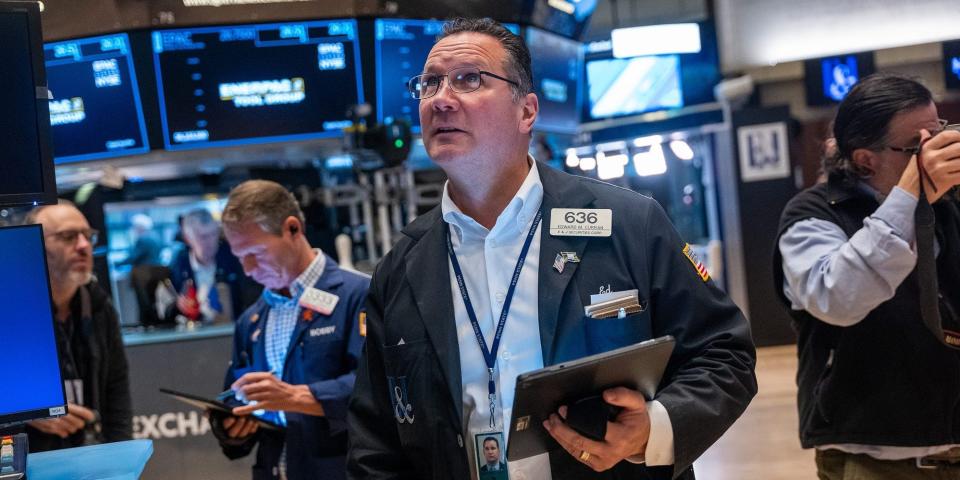Stocks are looking 'eerily similar' to the last bear-market crash, Charles Schwab says

Market dynamics mirror 2021, potentially signaling a bear market on the way, Charles Schwab said.
There's a growing divergence between index-level and individual stock performance
The number of individual stocks reaching new highs is falling, despite the market's bull run.
Current stock market dimensions are starting to mirror 2021, a year that preceded the most recent bear market correction, Charles Schwab wrote this week.
In its latest commentary, the bank took aim at the growing misalignment between index-level and individual stock performance. The growing divergence has only become more extreme, and is a risk worth monitoring, CIO Liz Ann Sonders wrote.
"If we continue to see more weakness in the former and strength in the latter, it will start to eerily mimic 2021's dynamic," she wrote.
While the S&P 500 has enjoyed a streak of record highs throughout this year, the percentage of individual stocks that are trading above their 50-day moving average has dwindled, she noted.
"That was the case in the second half of 2021 which, with the benefit of hindsight, correctly signaled that the market would no longer be able to hold up at the index level—thus leading to the bear market in 2022," Ann Sonders said.
The benchmark index tumbled around 25% that year before the upside resumed in 2023.
While the S&P 500's steepest drop this year has been about 5%, the average individual stock in the index has fallen as much as 15%. That measure is even worse for the Nasdaq, with the median decline of single names in the index at 38%, Schwab said.
And as of last Friday, less than 10% of stocks listed on the S&P and Nasdaq hit new 52-week highs. At the same time, the number of individual names reaching fresh lows is at bear market levels, the note added.
This index-level bull run is best explained by a deep concentration in a narrow field of stocks, with AI beneficiaries leading the way. However, Ann Sonders noted that these aren't necessarily the biggest stocks, despite heavy focus often given to the top tech mega-caps.
"It also may surprise some that three of the top-10 best performers this year are not in the Technology sector, but instead in the Utilities sector," she wrote. "Credit the second-order beneficiaries of the artificial intelligence (AI) boom, as well as the build-out of the country's energy grid. The list has also gone 'old school' with General Electric…go figure!"
Read the original article on Business Insider

 Yahoo Finance
Yahoo Finance 